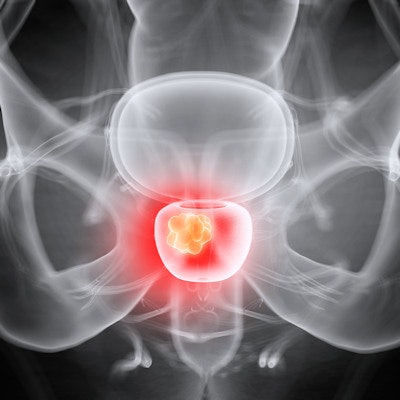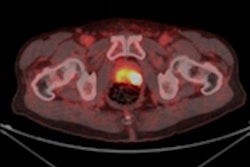
Interpretation criteria for gallium-68 (Ga-68) prostate-specific membrane antigen-11 (PSMA-11) PET with CT or MRI for prostate cancer can bolster interreader agreement, but some performance issues remain, according to a study published online September 27 in the Journal of Nuclear Medicine.
Stanford University researchers assessed the use of three different criteria for interpreting these exams and found that all three yielded "substantial to almost perfect" interrater and intrarater agreement for any cancer site on PET/MRI. The same level of interreader agreement was found with PET/CT studies, with the exception of one criterion for judging distant metastases.
"Although the three published criteria have good interreader and intrareader reproducibility in evaluating Ga-68-PSMA-11 PET, there are factors bringing interreader disagreement," wrote lead author Dr. Akira Toriihara and colleagues from Stanford. "This indicates that further work is needed to address the issue."
Ga-68 PSMA-11 PET/CT has gained acceptance fairly quickly as a prime modality for detecting and initial staging of prostate cancer. Previous studies have estimated per-patient sensitivity of 80% and specificity of 97% for detecting biochemical recurrence of the disease. The modality has also prompted changes in treatment strategies in 29% to 87% of cases.
To reinforce reproducibility and accuracy of image interpretation, three sets of criteria have been proposed: guidelines from European Association of Nuclear Medicine (EANM), the Prostate Cancer Molecular Imaging Standardized Evaluation (PROMISE) authored by Eiber et al in 2018, and a PSMA-reporting and data system (PSMA-RADS) from Rowe et al in 2018.
To determine whether each approach can contribute to greater interreader agreement, Toriihara and colleagues prospectively enrolled 104 patients for their study. They then created one group of 47 subjects (mean age, 64.2 ± 6.1 years) with biopsy-proven, intermediate- or high-risk prostate cancer who underwent Ga-68 PSMA-11 PET/MRI for initial staging. A second group of 57 patients (mean age, 70.5 ± 6.7 years) underwent Ga-68 PSMA-11 PET/CT for biochemically recurrent prostate cancer.
Three nuclear medicine physicians independently evaluated both groups' images based on the trio of criteria. Two of the physicians blinded to the initial results then reinterpreted the results six months later. Their analyses included local prostate tumors, lymph node metastases, and distant metastases.
The Stanford researchers found interreader agreements were "substantial to almost perfect" in the three aforementioned categories for the PET/MR images and also for the PET/CT results for the three criteria, except in the evaluation of distant metastases based on PSMA-RADS.
| Interreader agreement for each Ga-68 PSMA-11 criteria | |||
| EANM | PROMISE | PSMA-RADS | |
| PET/MRI group | |||
| Local sites | 70% | 75% | 73% |
| Lymph node metastases | 93% | 93% | 93% |
| Distant metastases | 96% | 97% | 89% |
| PET/CT group | |||
| Local sites | 69% | 73% | 77% |
| Lymph node metastases | 80% | 79% | 78% |
| Distant metastases | 84% | 80% | 57% |
The most frequent causes for interreader disagreement of distant metastases in the PET/CT group were lung nodules (11 patients), bone lesions (seven patients), asymmetrical sublingual gland uptake (three patients), and pancreatic uptake and mass-like thyroid uptake (one patient each).
Toriihara and colleagues concluded that, while the three proposed criteria have "good reproducibility" in evaluating Ga-68 PSMA-11 PET, "further work is needed to harmonize and/or improve the interpretation criteria for PSMA PET" to maximize accuracy. In the future, artificial intelligence algorithms should be able to help with lesion identification and tracking over time, according to the researchers.




















